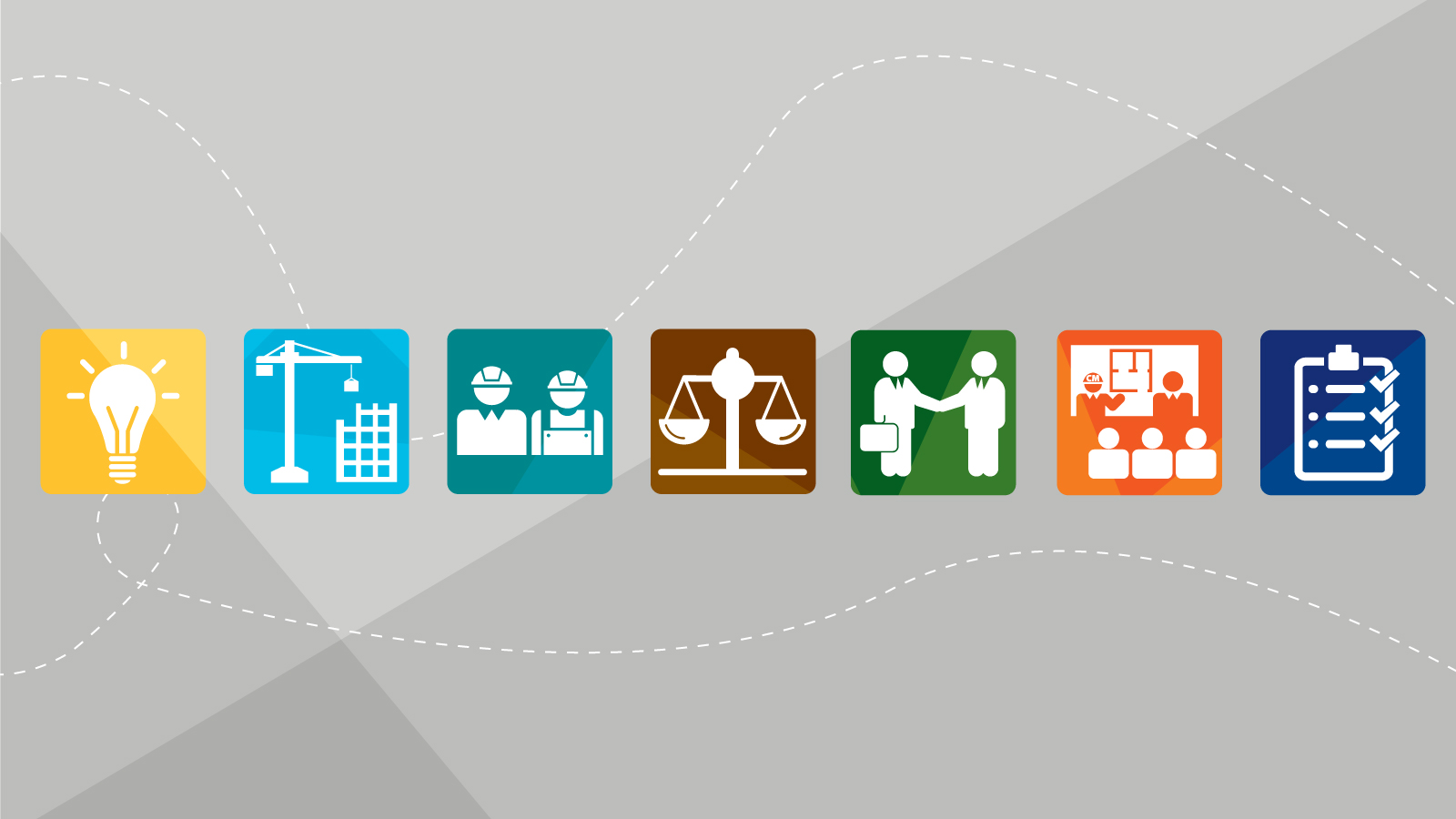Seven Ways to Optimise Your Alternative Delivery Project
While the benefits of alternative delivery are substantial, getting used to the process can be a challenge for you, your staff and your stakeholders – particularly if it’s your first time trying an alternative to design-bid-build. To help make the process as smooth as possible, we created this list of 7 tips that will help you maximise the value you can obtain by choosing alternative delivery.
 Have a clear vision of your project. Start with the end in mind. Let your vision of project goals guide your choice of the delivery method: some forms of alternative delivery are better suited than others for your particular priorities. For example, Construction-Manager-at-Risk (CMAR) is excellent at providing total transparency throughout the project, while Design Build (DB) is best for fast-tracking projects with scheduling concerns.
Have a clear vision of your project. Start with the end in mind. Let your vision of project goals guide your choice of the delivery method: some forms of alternative delivery are better suited than others for your particular priorities. For example, Construction-Manager-at-Risk (CMAR) is excellent at providing total transparency throughout the project, while Design Build (DB) is best for fast-tracking projects with scheduling concerns.
 Start with the right project. A smaller, straightforward project might not be the right fit for your first foray into alternative delivery. Choosing a medium-sized, more complex project ($10+ million) will allow you to gain the full benefits of alternative delivery, while acquiring more in-depth knowledge of the process for use on future projects. In general, the more complex a project is, the greater value differential you‘ll obtain by using alternative delivery.
Start with the right project. A smaller, straightforward project might not be the right fit for your first foray into alternative delivery. Choosing a medium-sized, more complex project ($10+ million) will allow you to gain the full benefits of alternative delivery, while acquiring more in-depth knowledge of the process for use on future projects. In general, the more complex a project is, the greater value differential you‘ll obtain by using alternative delivery.
 Choose an experienced team. Look closely at the qualifications of the teams that you consider selecting to assist with an alternative delivery project. When you’re trying alternative delivery for the first time, make sure you balance a competitive price with a team that’s worked together on alternative delivery projects before. Joining forces with an experienced team will help minimise roadblocks and delays. They will help you through the process with hard-won, first-hand knowledge.
Choose an experienced team. Look closely at the qualifications of the teams that you consider selecting to assist with an alternative delivery project. When you’re trying alternative delivery for the first time, make sure you balance a competitive price with a team that’s worked together on alternative delivery projects before. Joining forces with an experienced team will help minimise roadblocks and delays. They will help you through the process with hard-won, first-hand knowledge.
 Get buy-in from legal. Get your legal department involved early and often. Each state has different rules and regulations, so your legal advisor can help find the right approach to navigating contracts. Try having your legal team work with your consultant partner to identify a model alternative delivery contract that’s a good fit, and then tailor it to your particular needs. By aligning the priorities and expectations of your legal department with your own, you can eliminate a major potential stumbling block.
Get buy-in from legal. Get your legal department involved early and often. Each state has different rules and regulations, so your legal advisor can help find the right approach to navigating contracts. Try having your legal team work with your consultant partner to identify a model alternative delivery contract that’s a good fit, and then tailor it to your particular needs. By aligning the priorities and expectations of your legal department with your own, you can eliminate a major potential stumbling block.
 Identify an executive sponsor. Using alternative delivery for the first time will unlock major value for your organisation, but change always presents a potential challenge. If you’ve determined that alternative delivery is the right choice on merit, don’t let political issues sidetrack you. Leave that work to the experts. Enlisting a strong executive sponsor (a board member, city councillor, executive director, or similar) to be the public face of the project will provide “air cover” for you as you move forward.
Identify an executive sponsor. Using alternative delivery for the first time will unlock major value for your organisation, but change always presents a potential challenge. If you’ve determined that alternative delivery is the right choice on merit, don’t let political issues sidetrack you. Leave that work to the experts. Enlisting a strong executive sponsor (a board member, city councillor, executive director, or similar) to be the public face of the project will provide “air cover” for you as you move forward.
 Hone your skills with CMAR. CMAR is typically the methodology an owner should choose when first implementing alternative delivery, since it preserves many of the structures of traditional design-bid-build while adding some alternative delivery improvements. To optimise CMAR, bring the construction manager into the process early, so they can start looking at efficiencies and sequences and work with designers to enhance the design.
Hone your skills with CMAR. CMAR is typically the methodology an owner should choose when first implementing alternative delivery, since it preserves many of the structures of traditional design-bid-build while adding some alternative delivery improvements. To optimise CMAR, bring the construction manager into the process early, so they can start looking at efficiencies and sequences and work with designers to enhance the design.
 Ensure your scoring system is sound. As the owner, it’s crucial to spend time thoroughly communicating to the bidders exactly what is important to you and what will be your deciding factors. Be transparent and up front about how you will pick the winner. Having a smooth system and defining the rules will give everyone going in an understanding of what they need to do to win and what you value in your partner. And it will make the selection process much easier for you and your team.
Ensure your scoring system is sound. As the owner, it’s crucial to spend time thoroughly communicating to the bidders exactly what is important to you and what will be your deciding factors. Be transparent and up front about how you will pick the winner. Having a smooth system and defining the rules will give everyone going in an understanding of what they need to do to win and what you value in your partner. And it will make the selection process much easier for you and your team.






